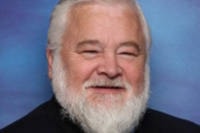Rev. Yme Woensdregt
You have probably heard of Anne Frank. She was a Dutch Jewish teenager who wrote a diary about her experience of living in hiding with her family during the German occupation of The Netherlands in World War 2. “Anne Frank: The Diary of a Young Girl” has become a classic of literature written during war. She describes the day–to–day details of living in hiding, her fears, the toll a life like that took on her and her family.
They were discovered in the “secret annex” by the Nazis in August 1944, and eventually sent to the concentration camp at Bergen–Belsen, where she died at the age of 15 in March 1945, only weeks before the camp was liberated.
However, you may not have heard of another diarist from the same time. A young Jewish woman, 15 years older than Anne Frank, also kept a diary. Her name was Esther Hillesum, and she was commonly known by the Dutch contraction of her name, Etty Hillesum. She died in Auschwitz at the age of 29.
She lived just a few blocks from Anne Frank. The diaries of both of these young women have become powerful witnesses and testimonies to the power of human hope in the darkest of times. They are particularly poignant today as refugee children are imprisoned in cages and immigrant communities are threatened by raids from officials of the US Immigration and Customs Enforcement agency.
Like Anne, Etty kept a diary of the last two years of her life. Two things strike me as I read it.
The first is that she made a deliberate choice to stand in solidarity with the suffering of her people during this time of persecution by the Nazis. The Netherlands were invaded by the German army in May, 1940. For the first year and a half, the Germans ruled with a velvet glove. But on April 29, 1942, all Dutch Jews were ordered to wear the yellow Star of David so that they could be easily identified.
Etty describes all of this in her diary. Before being forced to wear the Star, she could move freely and anonymously in Amsterdam. She could get around on public transport or her bicycle. She lived in one of Amsterdam’s most affluent and beautiful sections, where she had good meals, drank real coffee and hot chocolate, and was able to spend her nights in the embrace of her lover.
In June 1942, however, she wrote that “Jews may no longer visit greengrocers’ shops; they will soon have to hand in their bicycles, they may no longer travel by tram, and they must be off the streets by eight o’clock at night.”
She may not have had much choice, but she embraced her Jewish identity with pride and dignity. Her overriding impulse was not self–preservation, but to share the fate of her people. “I don’t think I could feel happy if I were exempted from what so many others have to suffer.”
Even more striking is her unusual conviction to continuously praise life and express the love which flooded her being. She signed one of her entries in the concentration camp, “the thinking heart of the barracks”.
Her strong sense of purpose in life is evident in one of the entries in her diary. “The latest news is that all Jews will be transported out of the Netherlands through Drenthe Province and then on to Poland. And the English radio has reported that 700,000 Jews perished last year alone, in Germany and the occupied territories. And even if we stay alive, we shall carry the wounds with us throughout our lives. And yet I don’t think that life is meaningless. And God is not accountable to us for the senseless harm we cause one another.”
Another entry reads, “I know that a new and kinder day will come, and I would so much like to live on, if only to express all the love I carry within me. And there is only one way of preparing the new age, by living it even now in our hearts.” Even in such horrific circumstances, she could conceive of “living the new age even now in our hearts.”
In a time of great darkness and confusion, she bore witness to the power of love. She tried to reconcile the great reality of suffering and the appreciation for the beauty and meaning of life. “Despite everything,” she wrote again and again, “life is full of beauty and meaning.”
It seems to me that her determination to affirm the goodness of existence in spite of the profound hopelessness around her becomes a call for us all. “Ultimately, we have just one moral duty: to reclaim large areas of peace in ourselves, more and more peace, and to reflect it towards others. And the more peace there is in us, the more peace there will be in our troubled world.”
Like Anne, Etty offers us a model for shaping our own age as “the thinking hearts of our time”, no matter what circumstances we might face. Her soul was not bound by the most devastating circumstances she faced. She was transformed by love, even though she walked through the flames of the most brutal of human circumstances.
